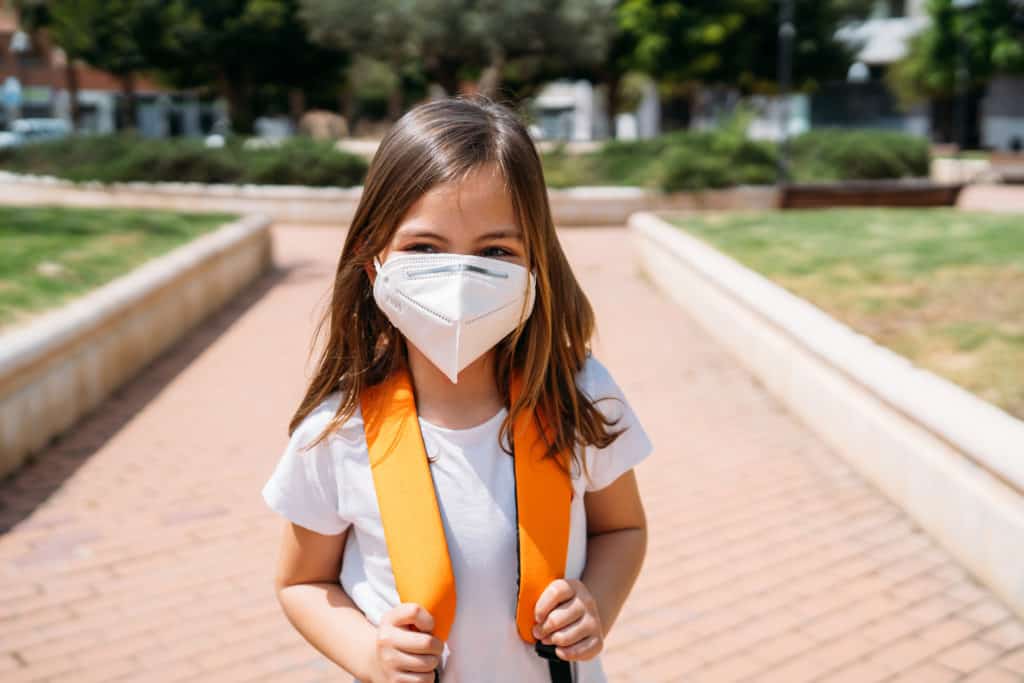
The pandemic has changed so many facets of our lives that it sometimes seems like everything is getting revamped, revised, or reconstructed. That most certainly goes for school, too. If your child’s school is opening for in-person learning this fall, you no doubt have lots of questions about what the day will be like for your child. Your child will, too. One thing that will likely be very different is the school lunch experience.
The National School Lunch Program provides low-cost or free meals to approximately 30 million children daily. When the pandemic hit and schools closed, lots of kids found themselves without their usual mid-day meal. Districts scrambled to fill the gap, though many found that participation dropped due to students being at home. Now that the new school year is upon us, you might be wondering what school lunch will look like for your child. Here’s an idea of what kinds of changes to expect at your child’s school (or child care center) this fall.
Menus will be different.
The days of organized efforts to continually improve the nutritional content of school lunches nationwide (spearheaded by Michelle Obama) are over—at least for now. School districts have their hands full trying to fulfill their main school foodservice objective: making sure the nation’s school children are fed. In June the USDA announced that it is allowing schools more flexibility around school-provided meals during the 2020-2021 school year in light of pandemic-related issues impacting areas such as safety, staffing, and food availability. This meal pattern waiver (and others related to school feeding situations) is available to all states, but it is optional. The typical nutrition considerations that required following a USDA-approved school meal pattern may be put aside if it means that food service to school children will be compromised.
Last spring, schools serving “grab and go” meals for curbside pickup offered plenty of cold meal options, such as sandwiches and individually-packaged salads—but that wasn’t all. According to a School Nutrition Association survey, 65% of districts reported offering entrees and side dishes to be heated at home, 64% offered shelf-stable meals, 36% offered hot meals, 22% included locally-sourced foods in their meals, and 16% served some bulk foods, such as gallons of milk and loaves of bread. Given this range of options, it’s clear that school food service departments around the country did what they could during a very trying time.
Whether this school year brings additional ingenuity remains to be seen, but one can anticipate that a combination of these types of offerings may be in the works in your school district, especially if students are attending school every-other-day and getting meals for their “off” days.
The way the food is provided to students will change.
There is no one perfect method for delivering food to children during in-school hours. Instead, the School Nutrition Association outlines three possible scenarios for food distribution for both breakfast and lunch:
Classroom delivery with classroom dining
Plenty of schools were already delivering some type of breakfast to classrooms prior to the pandemic. Some students will be used to the idea of eating a meal in the classroom. There might be a central location where groups of students will go to collect their meals and return to their classrooms. Alternatively, meals may all be delivered directly to the classrooms. The teacher may order a special lunch or breakfast for students with certain dietary needs. Transport equipment that delivers the meals will be sanitized between trips to the classrooms.
Cafeteria service with classroom dining
Students who are having a school-provided meal will go through the regular cafeteria serving line for this option. They will then return to their classroom with their food. This allows for some meal customization and a la carte purchases. Self-service options like a salad bar will not be available. Students might be able to pick a standard option from a “grab and go” station. They will still be required to maintain physical distance while waiting in line. Students would only visit the cafeteria in small groups. Sanitizing would be performed between groups coming through the line.
Take-home meals
For students who attend school part-time, take-home meals may be available for students. This would allow students to have a breakfast/lunch provided by the school that helps cover the hours they are not physically in class. Many school systems provided children with curbside meals during the spring shelter-at-home time. They may use this process on their home-school days. Each district will need to decide whether these meals will be available to everyone, or just the low-income students. Any outdoor eating spots provided likely won’t be heavily sanitized, as the CDC recommends regular cleaning routines for these areas.
Making sure students have adequate food that is provided in a safe manner is always a priority. It’s even more important now. Increasing food insecurity, added safety practices, and decreasing opportunity for typical socialization puts even more pressure on school districts and their food service departments. I, for one, applaud the dedicated school food service employees for all they have done to help ensure that our nation’s students get the food they need.